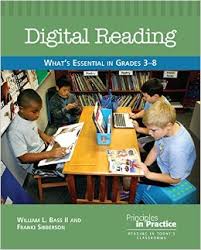 |
| #cyberPD 2015 |
I can't believe that this is the last blog post for #cyberPD. This book was a quick read and one of those books that was just easy to read and made a lot of sense. There were many applicable ideas in this book and #cyberPD has taken this book to even the next level through this awesome "cyber-opportunity." :-)
Chapter 6-Assessment: Keeping Our Eye on the Literacy
The quote that starts out this chapter...nails exactly how I feel about assessment in literacy.
"Assessment needs to be the vehicle that moves us beyond defining our readers as a number. Assessment should not be about defining a reader but about piecing together information to help us design classroom experiences so we can observe our readers learning and understand what each one needs."-Clare Landrigan and Tammy Mulligan
I've always believed that assessment when it comes to literacy should be qualitative. Teachers often think that there is one magic reading assessment that they can give to identify a child's reading/literacy needs, but it really is a bunch of little observations and assessments. I usually conduct the Words Their Way spelling inventory, a writing sample, the Fountas and Pinnell benchmark assessment, reading observations, conferring notes, and an assessment that entails an extended response. I put all of these together to develop a profile about the reader and then I can decide on the direction that I need to go with the reader. As I'm reading this book and reflecting, I realize that I would like to also incorporate assessing digital literacy skills. I need to do some more thinking around how this would look and what is most crucial to assess. I'm almost thinking...instead of concepts of print...maybe concepts of digital literacy to get a feel for what they already know and what they need to learn.
I love the digital reading survey questions and I will definitely incorporate these questions into my reading survey in our data binders. I'm also looking to expand on using digital portfolios and "beefing" them up. Last year, I created digital portfolios on Google Drive and we used them, but not to their fullest potential. This is something that I really want to focus on this year as a way to collect student work and reflect on it. These are a great way to collect work for student led conferences and to show off the student's impressive digital work.
Chapter 7-Beyond the Classroom Walls: Connecting Digital Reading at Home and School
As for the connection between school and home, I use our class Twitter account, our class website, and my most favorite tool...smore. This is a website that allows you to create digital newsletters and I love it so much that I buy an educator subscription. The newsletters are sooo easy to create, look attractive, and are "parent friendly." I can add links to articles or websites, have parents RSVP for events, add pictures, change the background/fonts/color, and the list goes on. I always try to add in an article or resource each week for the parents who wish to read them.
Here are some links to some of my newsletters...
I send out a newsletter ALMOST every week and it's a great way for parents to access newsletters. They can go back to it at a later date and refer to the dates or the information that I have given out. It even has analytics so that you can see how many people have accessed your newsletter and you can even see where people are viewing it from around the world. I have noticed that there are a A LOT of traveling parents out there that access the newsletter. This is just an AWESOME digital tool that I just LOVE!
It's important for parents to see the importance of technology in our school and support our 1-1 iPad initiative. That's why I try to incorporate it as much as possible to showcase the importance of technology in the classroom.
I love the line that says, "Teachers need to offer opportunities for schools and families to connect around these topics and make meaning of them together." This is an important job for each and every teacher!





